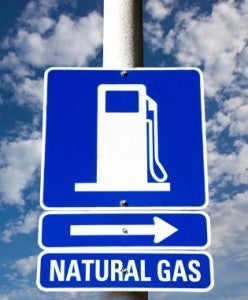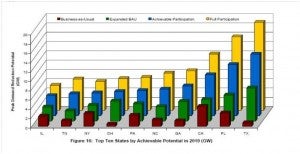 Last night the Pennsylvania (PA) General Assembly passed legislation on fracturing fluid chemical disclosure that, on the whole, isn’t half bad – particularly considering where they started. Unfortunately, the bill contains a major flaw that prevents us from being able to hold it up as a model for other states to follow. Still, there’s quite a bit to be liked. More on that below.
Last night the Pennsylvania (PA) General Assembly passed legislation on fracturing fluid chemical disclosure that, on the whole, isn’t half bad – particularly considering where they started. Unfortunately, the bill contains a major flaw that prevents us from being able to hold it up as a model for other states to follow. Still, there’s quite a bit to be liked. More on that below.
I should also point out that the disclosure legislation was part of a much larger bill that addresses a broad range of issue related to shale gas development in PA. The overall bill has been the target of quite a bit of criticism from local environmental groups – particularly for eliminating much of the discretion of local jurisdictions to manage and plan for oil and gas activities within their borders. We didn’t work on those provisions, so I’ll leave it to those who did to offer up their assessments and, for now, just give a run-down on the disclosure piece.
As originally drafted, the disclosure provisions in this bill were, quite frankly, useless. All they would have done is codify current rules at the PA Department of Environmental Protection (DEP). Under those rules, companies only reveal the chemicals that have to get reported on material safety data sheets – which leaves out maybe half the chemicals used in fracturing fluids. And there was no requirement for posting disclosures on an easily accessible website for the public to see. That kind of regime comes nowhere close to what EDF calls “disclosure,” and it’s way behind the times in terms of where the national conversation is today. So, EDF teamed up with the Pennsylvania Environmental Council to improve the draft.
The Good
The first thing to understand is that PA will require two kinds of reporting. Operators will disclose chemical information on the well completion reports they turn in to the DEP after drilling, fracturing and beginning production on a well. And then, certain operators will be required to also post their disclosures on Frac Focus, the disclosure website run by the Ground Water Protection Council and the Interstate Oil and Gas Compact Commission.
As for the well completion reporting requirements, they’re quite good. Operators will have to disclose all the chemicals they use, along with chemical concentrations. They’ll also disclose the trade-name additives they use and the purposes they serve. Taking it a step further than what other states have done, PA will also require operators to report their water sources and how much recycled wastewater they use in hydraulic fracturing treatments – an important step forward in disclosure requirements.
As with every other state disclosure rule, PA will allow operators to claim trade secret protections to keep certain chemical identities confidential. These claims will be governed by PA’s “Right to Know” law, which means PA will be on the leading edge of how states are currently dealing with trade secrets in fracturing chemical disclosure rules. Companies will be required to actually submit their trade secret information to the DEP (instead of completely withholding it, as some states allow). Citizens will have broad standing to challenge trade secret claims at the PA Office of Open Records; and when there are challenges, the burden will be on the DEP and operators to prove why a trade secret claim is legitimate. We’re aware that some in industry repeatedly tried to gut the Right to Know provisions in the bill, and credit is due to Governor Corbett’s office for fending off those attacks.
As we’ve mentioned before, we support the recommendation of the DOE Secretary of Energy Advisory Board that “the barrier to shield chemicals based on trade secrets should be set very high.”
Finally, the PA bill gives added emphasis to the need for making information available in formats that are useful and user friendly. Mirroring the language that was pioneered in the Colorado rule, PA is now the second state to call for improving the search functions on Frac Focus.
The Bad (and Ugly)
Unfortunately, the bill took a major wrong turn on one key point. While operators of all oil and gas wells will be required to disclose chemical information on their well completion reports, only operators of “unconventional” wells will be required to post their disclosures on Frac Focus. The bill defines unconventional wells as those that are drilled and fractured below the Elk Sandstone formation in PA. We’re not sure yet how many wells this will leave out, but it’s a fair guess it will be a lot. So, we’re really only getting partial public disclosure here.
That’s a shame. Public concern about fracturing chemicals doesn’t have anything to do with geologic stratigraphy. Spills, bad casing and cementing jobs, loss of well control and failures in waste containment facilities can happen regardless of the depth of your target formation. The potential pathways for contamination are there for all wells (and arguably, they’re even higher for shallower wells). So, there’s no rational reason why all wells shouldn’t be required to post their disclosures on Frac Focus.
PA is the only state that’s made this bizarre differentiation between conventional and unconventional wells. We’ll be looking to fix that problem in the future. And in the meantime, we’ll be working overtime to make sure no other state repeats this mistake.















